Security Heritage Hub
Centre for Criminal Justice Studies
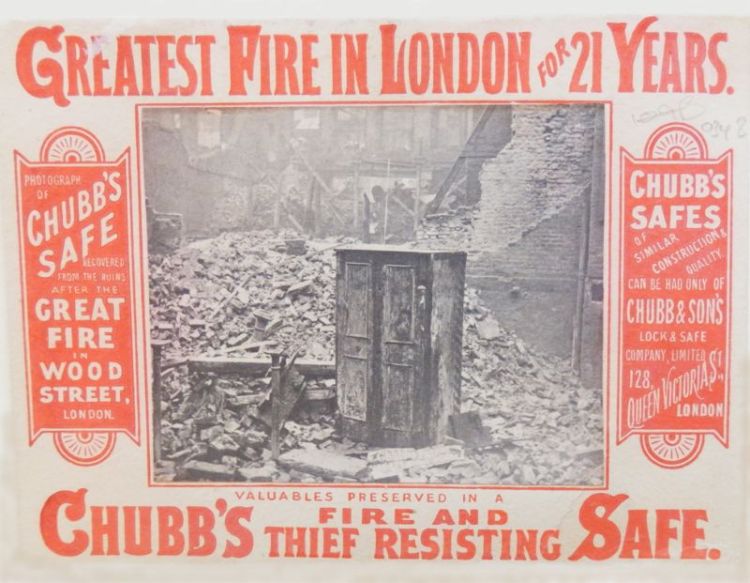
Today our shopping centres are patrolled by private guards, our town centres watched over by CCTV, our computers protected by anti-malware systems and firewalls, and our homes fortified by locks and alarms.
Behind these features of everyday life lies the revealing yet largely forgotten history of security commodities. Over more than two hundred years we have moved from a small group of specialist lock-making firms to the vast and global security industry that exists today. This was a major social development that not only subtly shaped the way we imagine crime, fire and other risks, but also underpinned and facilitated fundamental transformations in social life – from bureaucratic record-keeping to the protection of property, from preservation of historic treasures to the circulation of paper currency. In short, security commodities have helped stitch together the very fabric of modern economic, social and cultural life.
A research project conducted at the University of Leeds by David Churchill and Miranda Clow sought to illuminate the history of security in modern Britain and to explore the value and uses of security heritage today. If you are interested in learning more about this work, or if you would like to share your memories of working in security, please get in touch with David Churchill.
(Image above: An advertising card for Chubb’s safes, 1883. The photograph shows the aftermath of a fire at Wood Street in the City of London. Chubb commonly inserted photographs of its safes that survived fire into its publicity. Courtesy of London Metropolitan Archives.)
Security Heritage
‘Security heritage’ encompasses the various traces of this fascinating history. It is made up of a wide array of material artefacts – from locks, safes and strong rooms, to alarms, armoured cars and surveillance devices. It also comprises the paper trail of the companies that produced and sold security – including promotional materials such as catalogues, pamphlets, brochures and magazines – and the various internal records that sustained these companies.
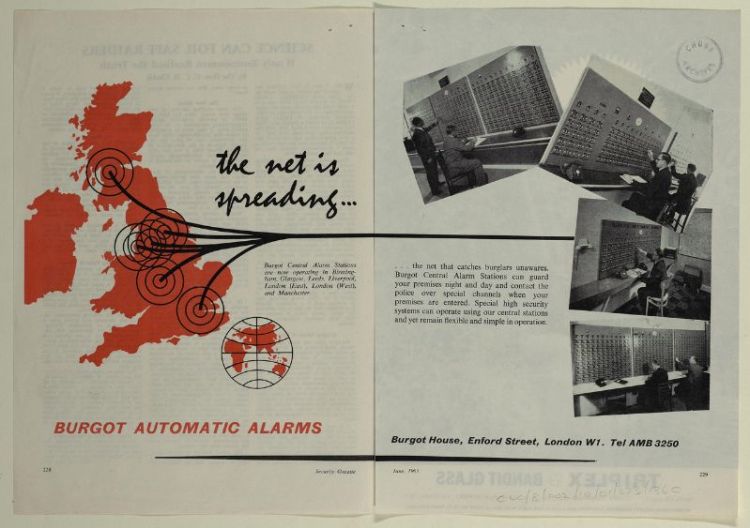
An advertisement for Burgot Automatic Alarms, 1963. The 1960s saw the spread of alarms which connected homes and businesses to police stations via central stations. Courtesy of London Metropolitan Archives.
Security heritage provides a fascinating window into social and cultural history, including business and advertising, home and work life, and attitudes towards risk, fear and security. It also, though, provides a potential resource for security organisations and other parties interested in security today. By opening up a largely forgotten, historical perspective, it provides an original medium for rethinking new forms of security and strategies of security enterprise. It also offers an original way of stimulating public interest in security and highlighting the value of security across society.
If you would like to learn more about what role security heritage can play in your organisation please contact David Churchill.
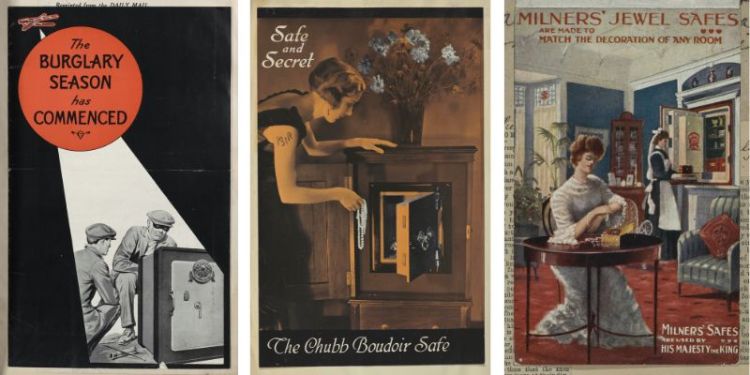
Left: An advertising card for Milners jewel safes, c. 1900s. Milners were safe manufacturers in Liverpool. Middle: An advertisement for Chubb, 1935. Right: An advertisement for Milners, 1930s. All courtesy of London Metropolitan Archives.
Links and Resources
If you are interested in learning more about security heritage, here are some starting points:
- ‘Security Heritage: Making Use of the Past in the Security Sector’ <pdf> introduces the concept of security heritage and elucidates the value of history and heritage to the security industry today.
- London Metropolitan Archives holds the Chubb and Son collection, the largest archive of any British security company. The collection is also rich in printed material, scrapbooks, photographs and films. While much the collection is catalogued, a large quantity of uncatalogued material is available upon request. Search ‘Chubb and Son’ or ‘CLC/B/002’ in LMA’s catalogue.
- The roots of Corps Security go back to the nineteenth century, making it the oldest private guarding company in Britain. It has invested in discovering and telling its long history. Its records are also held by LMA and have recently been catalogued (LMA/4777).
- The British Security Industry Association, with assistance from David Churchill, have produced ‘A quick history of security in the United Kingdom’.
- Security Heritage: Making Use of the Past in the Security Sector: ‘Security heritage’ refers to all the traces of security’s past that survive to this day.
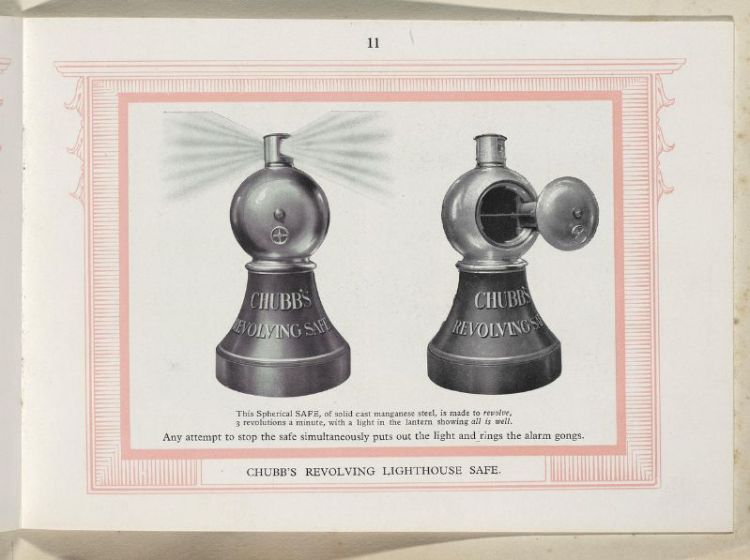
A ‘revolving’ safe, promoted in Chubb’s Souvenir of the British Empire Exhibition of 1924 booklet, 1924. Courtesy of London Metropolitan Archives.
‘Security for sale’
David Churchill and Miranda Clow conducted a research project at the University of Leeds entitled ‘Security for sale in modern Britain: security provision, ensembles and cultures, 1785–1995’, funded by the Arts and Humanities Research Council. Extending David’s earlier work on the history of locks and safes, this project aimed to provide a history of security and the security industry in the nineteenth and twentieth centuries, with a particular focus on locks, safes and strong rooms, alarms, guards and security transport services. The project was based on extensive research in various corporate and public archives, together with oral history interviews with longstanding figures in the security industry.
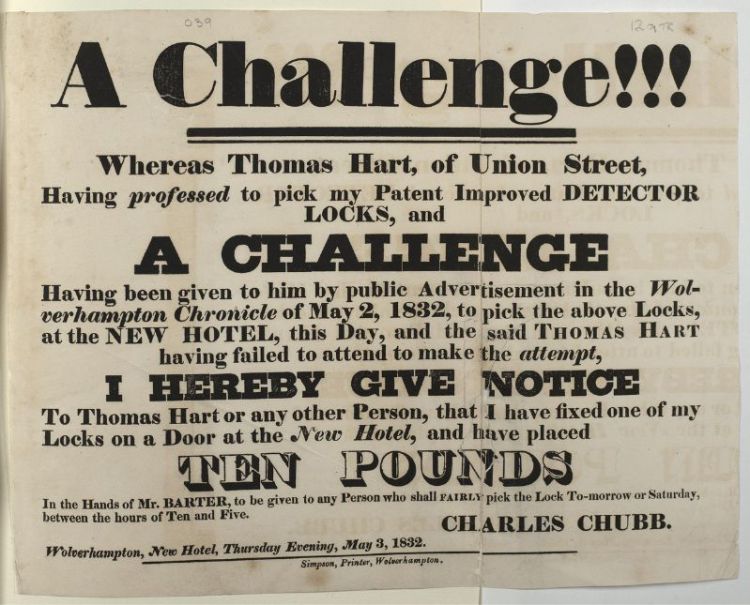
A notice for a lock-picking competition, promoted by the fledgling Chubb company, 1832. Public competitions were a mainstay of the security industry’s promotional activities in the nineteenth century. Courtesy of London Metropolitan Archives.
Working with three partner organisations – Chubb Fire & Security, Corps Security and the London Metropolitan Archives – the project showcased the value of security heritage and promoted the preservation of security heritage materials into the future.
Three public engagement events hosted by LMA brought attention to the cultural, visual and documentary manifestations of security heritage. LMA’s monthly Book Group explored ideas relating to security in Ian Fleming’s iconic James Bond novel Goldfinger. In the second event, a programme of films from the Chubb collection showed how that medium shaped the public’s awareness of security issues across the twentieth century. Chubb’s paper records were the focus of the final public event. Drawings, photographs, correspondence, promotional material and scrapbooks revealed how security products have been designed and made, tested and challenged, and bought and sold, for two centuries.
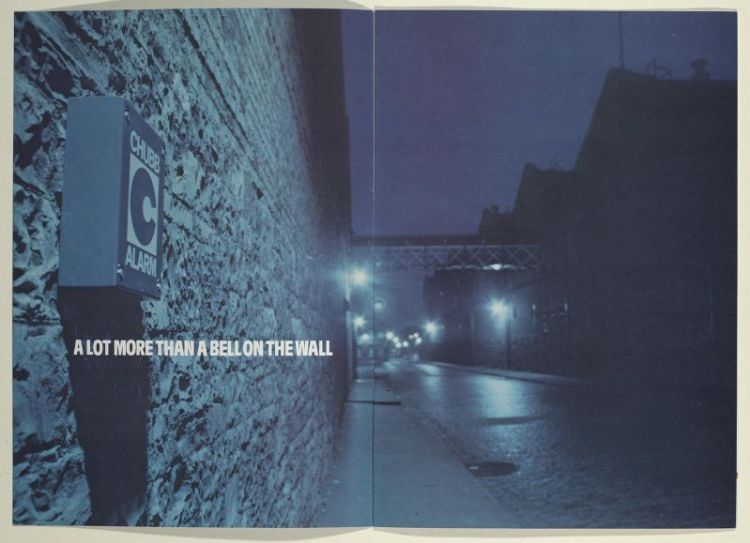
A spread from a brochure for Chubb Alarms, 1980s. Courtesy of London Metropolitan Archives.
The research project also sought to engage the contemporary security industry with its history and heritage. It hosted a Security Heritage Workshop at LMA, which made the case for wider and deeper engagement with security history and heritage in the security field. Read more about the workshop ‘Making use of the past in the security sector’. Miranda also conducted a survey of the history and heritage of Corps Security specifically. Read more about that work ‘Security for Sale’, here.
As part of the project, Miranda produced a full box list of uncatalogued records in the Chubb and Son collection, which allows readers access to this material for the first time. Read about her time behind the scenes at London Metropolitan Archives.
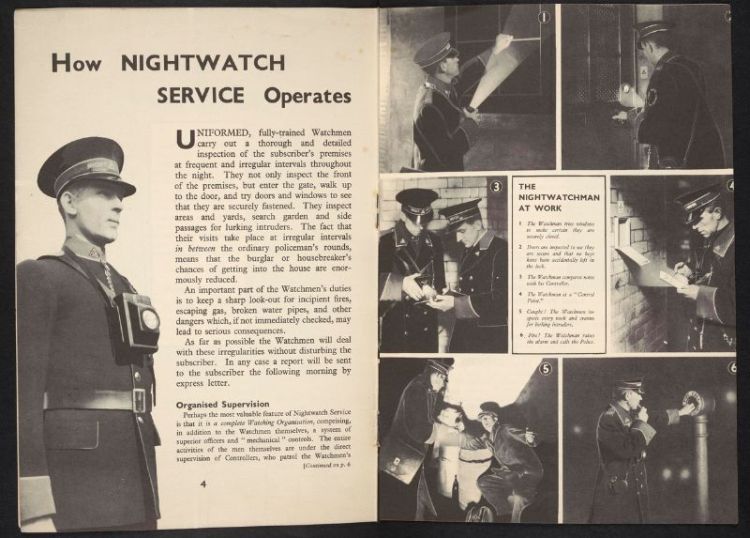
A spread from a promotional booklet for Nightwatch Services Ltd, 1935. The service was aimed primarily at businesses. © British Library Board (YD.2013.b.795).
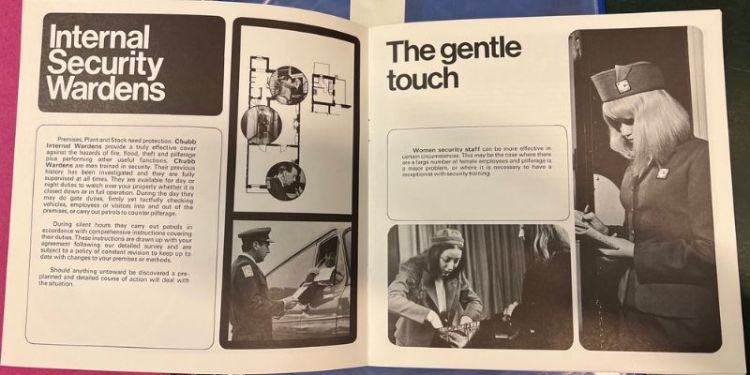
A spread from a promotional booklet for Chubb Wardens, c. 1970s. The post-war period witnessed dramatic growth in the scale and significance of contract security guarding. Courtesy of London Metropolitan Archives.
Security on screen
Security commodities have frequently appeared in film, from corporate promotions to public information films to heist movies. Chubb began making promotional films in the 1920s and continued doing so into the 1980s. The following videos are from the London Metropolitan Archives, which holds the Chubb archive.

